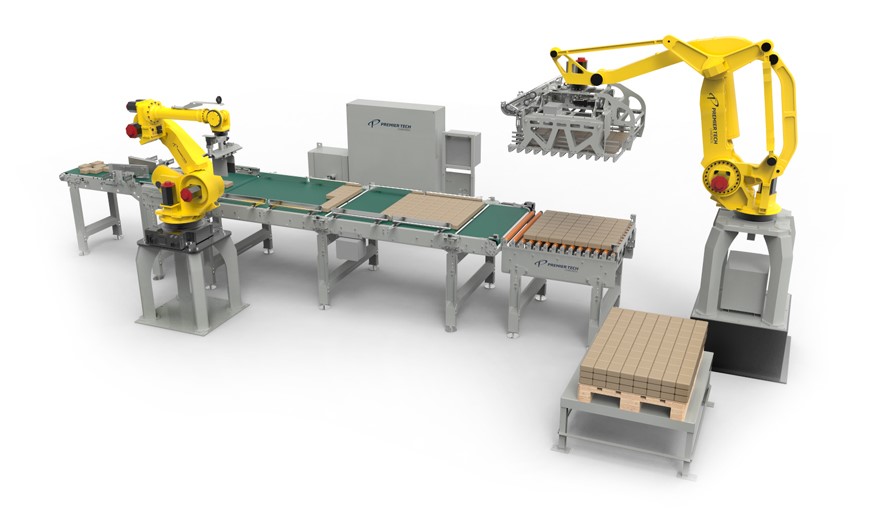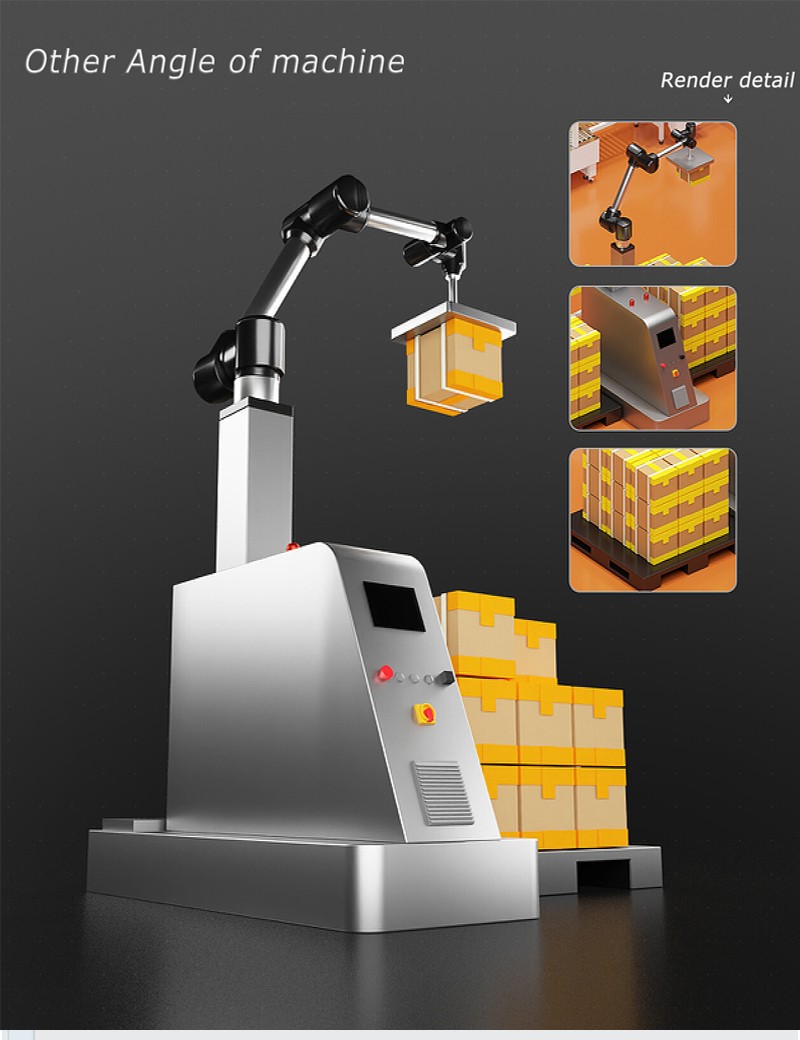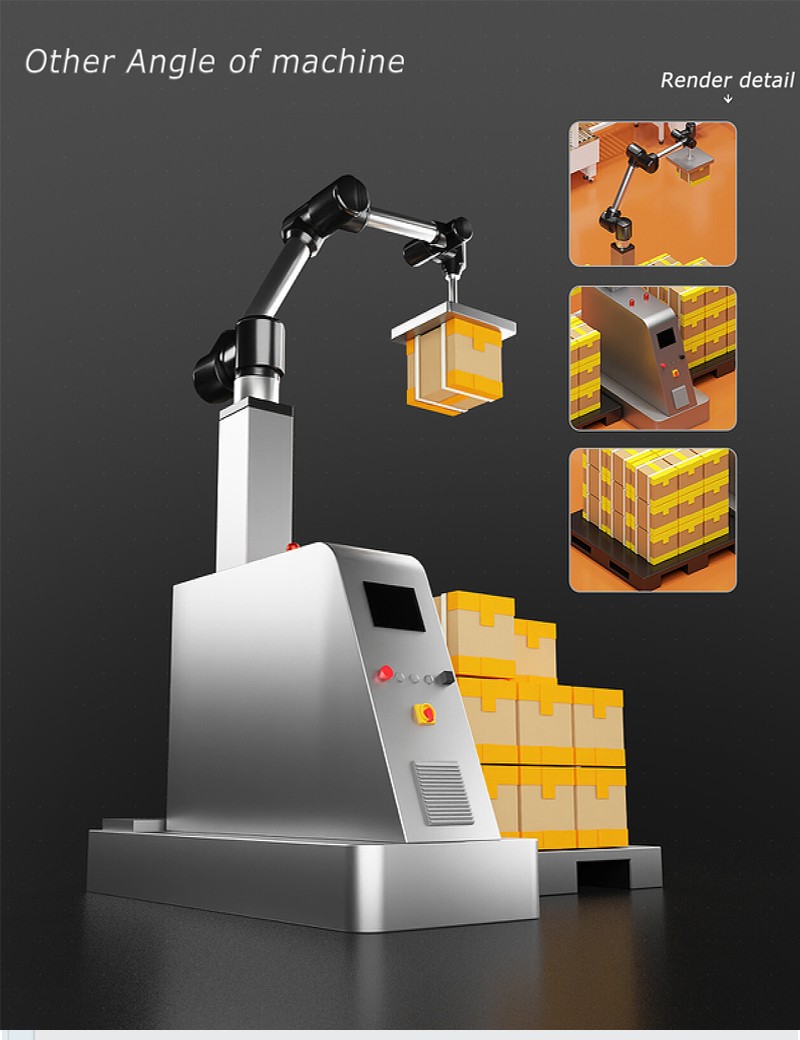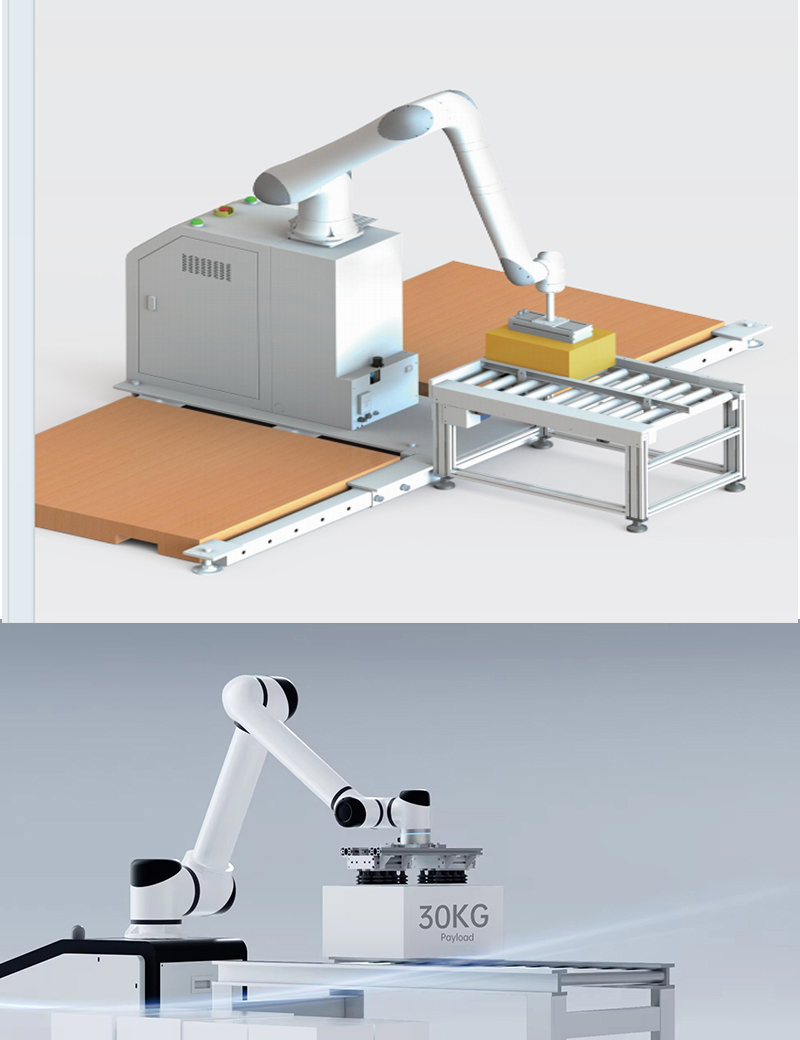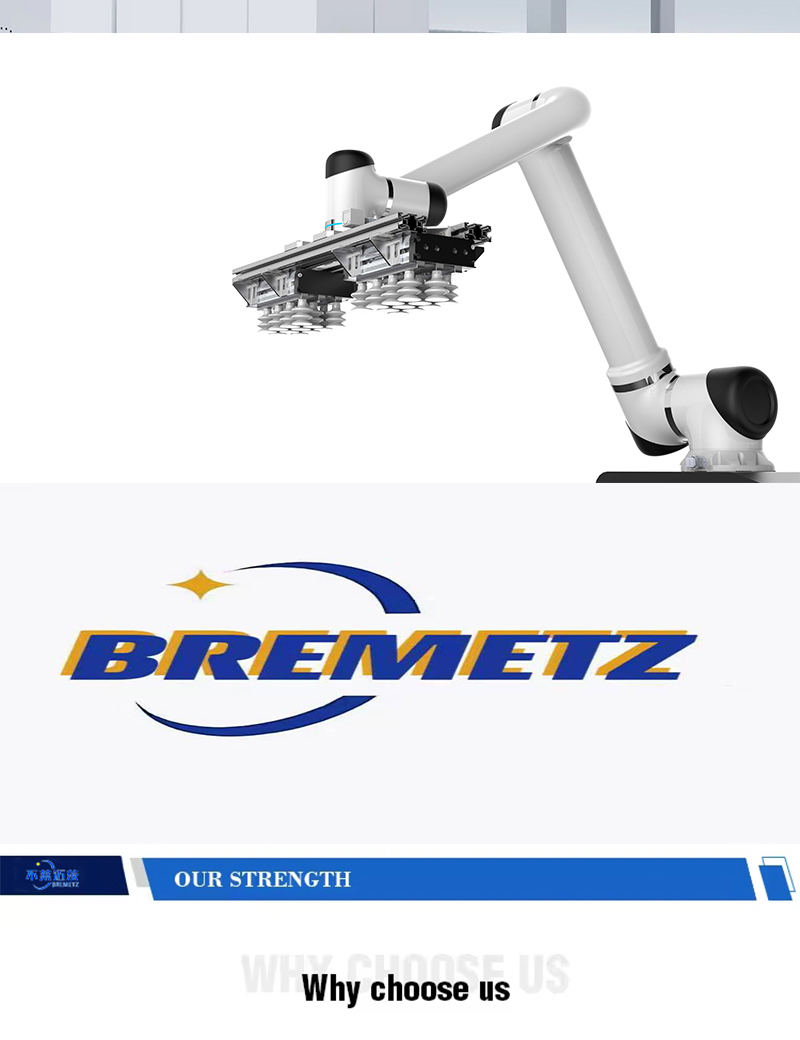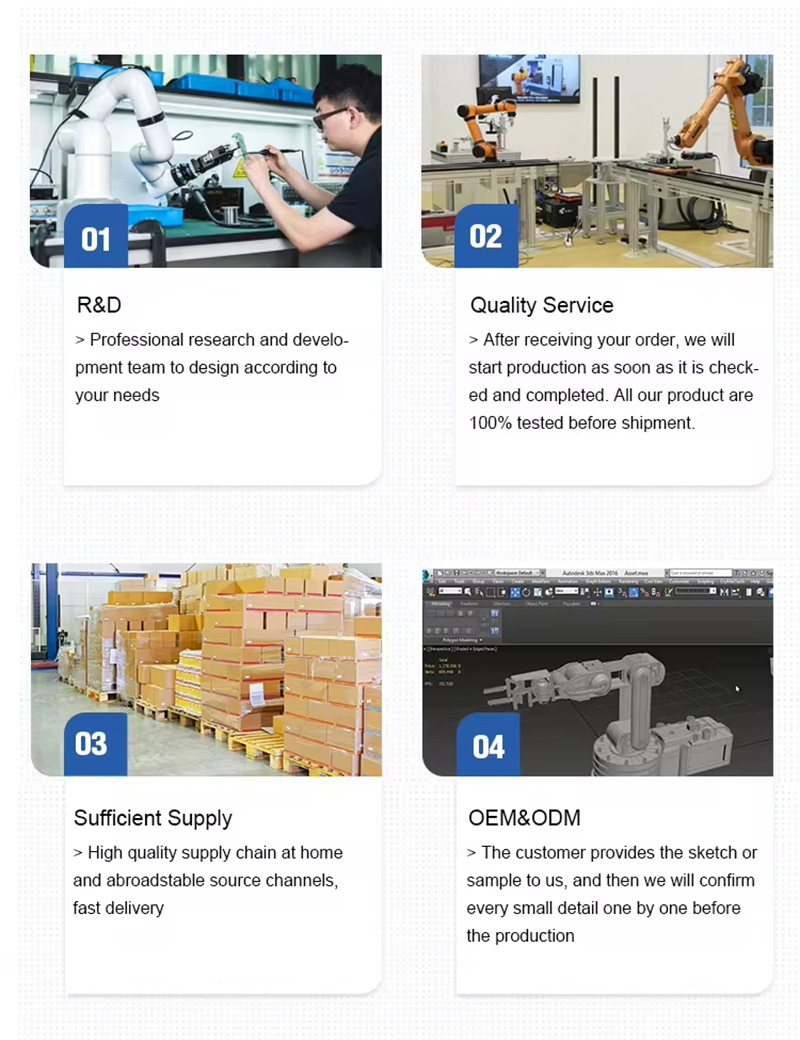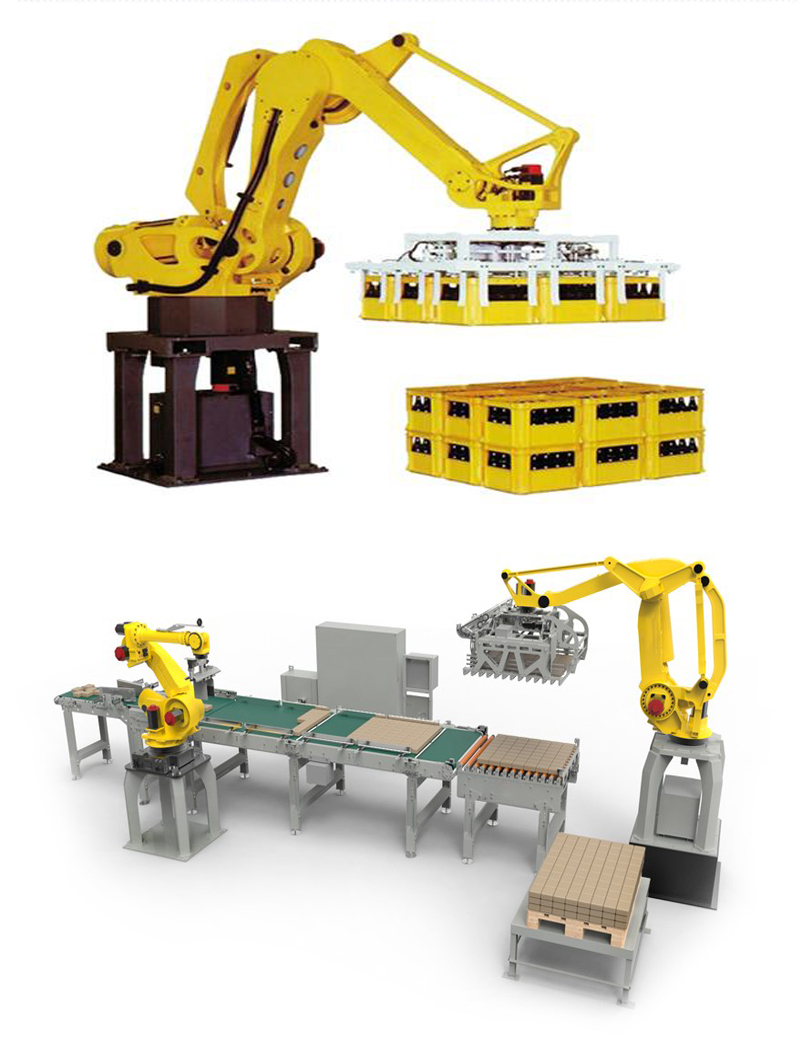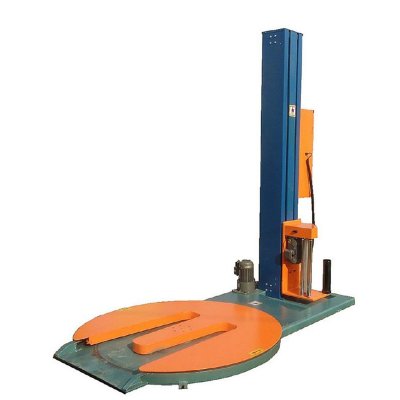Innovative collaborative palletizing robot
1. Efficient palletizing speed: Using advanced motion control technology and optimized workflow, the robot's palletizing speed is greatly increased. Compared with traditional palletizing equipment, innovative collaborative palletizing robots can complete more palletizing tasks in a shorter time, significantly improving production efficiency.
2. Accurate palletizing quality: With the help of high-precision sensors and advanced control algorithms, innovative collaborative palletizing robots can achieve millimeter-level palletizing accuracy. It can accurately place goods at the predetermined position on the pallet, ensure the neatness and stability of palletizing, and reduce the risk of collapse and damage of goods during transportation and storage.
3. Good repeatability and consistency: stable palletizing quality can always be maintained during long working processes. No matter what type and specification of goods it faces, the robot can perform palletizing operations according to preset standards and procedures, ensuring a high degree of consistency in the palletizing results of each batch.
4. Wide range of application scenario adaptability: It can adapt to the palletizing needs of different industries and fields, whether it is food, beverage, chemical, pharmaceutical, logistics and other industries, or enterprise production environments of various sizes, it can give full play to its advantages.
5. Convenient maintenance and upgrades: The modular design concept is adopted, making the various parts of the robot easy to disassemble, replace and repair. When a robot malfunctions, maintenance personnel can quickly locate the faulty component and repair it by replacing modular components, greatly reducing downtime and repair costs.
6. Equipped with an intelligent fault diagnosis and early warning system: able to monitor the operating status of the robot and the performance indicators of key components in real time. Once a potential fault or anomaly is discovered, the system will promptly issue an alarm and provide detailed fault diagnosis information to help maintenance personnel take quick measures to deal with it.
Material: The fuselage and key components are often made of high-strength, lightweight materials, such as carbon fiber composite materials, aluminum alloys, etc., which reduce the overall weight of the robot while ensuring structural firmness and durability, and improve movement flexibility and energy efficiency.
Joint design: Innovative joint design and advanced kinematic algorithms achieve flexible movement with multiple degrees of freedom, which can adapt to various complex palletizing scenarios and cargo placement requirements, and the movements are smooth, accurate and fast.
Intelligent algorithm: Equipped with artificial intelligence algorithms and deep learning technology, it has autonomous learning and decision-making capabilities. It can analyze a large amount of palletizing data, automatically optimize the palletizing path and grasping strategy, and adapt to different working environments.
Control architecture: The distributed control system architecture is adopted to disperse the control functions to each node, improve the reliability and real-time performance of the system, and facilitate system expansion and upgrade.
Visual sensor: Equipped with high-precision visual sensors and 3D imaging technology, it can quickly and accurately identify the shape, size, position and posture of goods, and realize intelligent grasping and stacking operations.
Force and tactile sensors: Introduce force sensors and tactile sensors to perceive the contact force and pressure information with goods and the environment, and realize fine operation control, automatic obstacle avoidance and safety protection functions.
Human-machine collaboration: Follow strict safety standards and have a variety of safety protection mechanisms, such as safety light curtains, laser radars, collision detection sensors, etc., to ensure the safety of human-machine collaboration.
Equipment collaboration: It has powerful communication and interface functions, supports a variety of standard communication protocols, can be seamlessly integrated and work together with other equipment on the production line, and can be flexibly configured and adjusted according to the production line layout and workflow.
Wide range of application scenarios: It can adapt to the palletizing needs of different industries and fields such as food, beverages, chemicals, medicine, logistics, etc., and can handle various goods such as cartons, bags, barrels, bottles, irregularly shaped parts, etc.
High production flexibility: It can quickly switch working modes and adjust palletizing strategies to meet the needs of mixed palletizing and customized palletizing of different products, and adapt to diverse production tasks and changing market demands.






